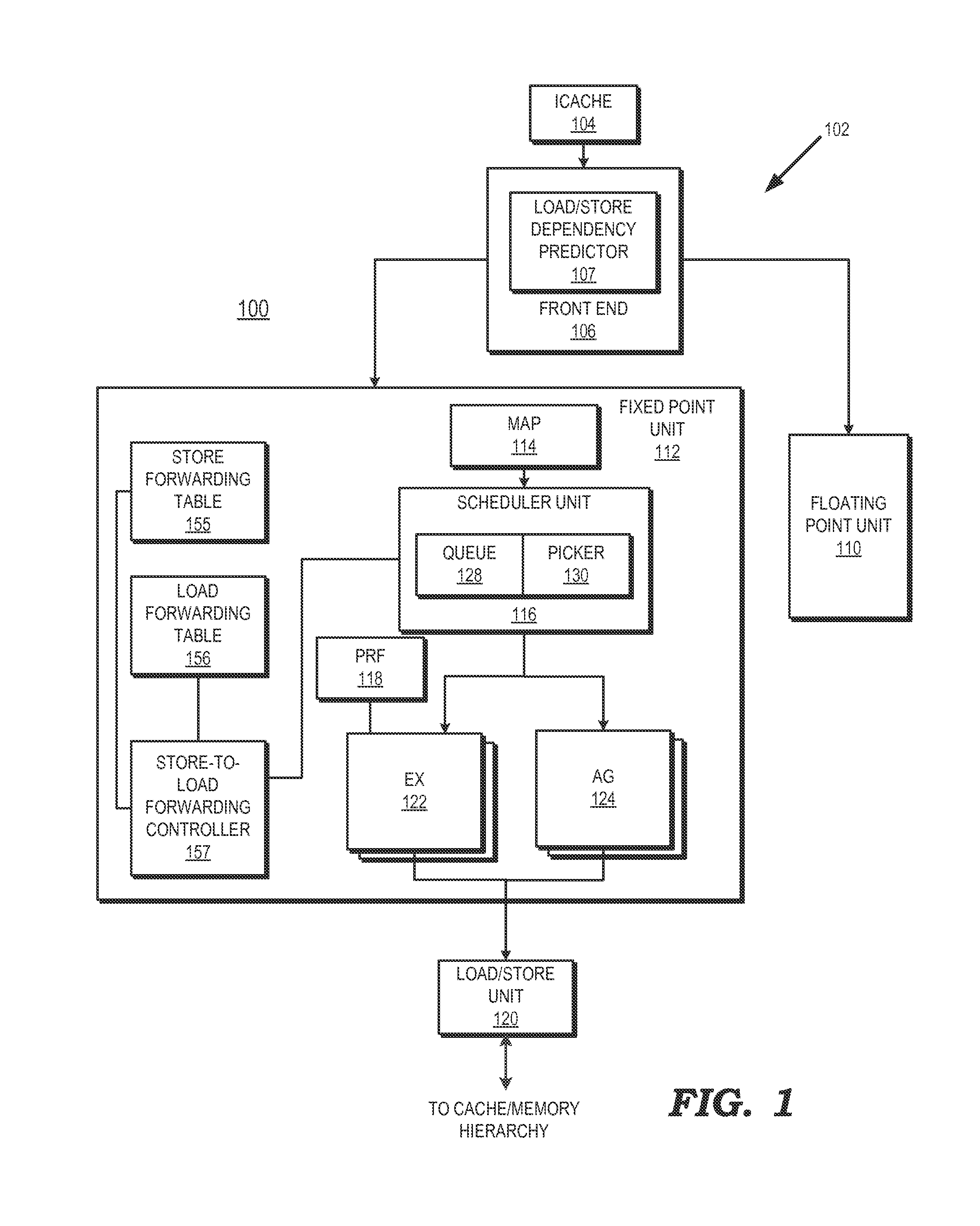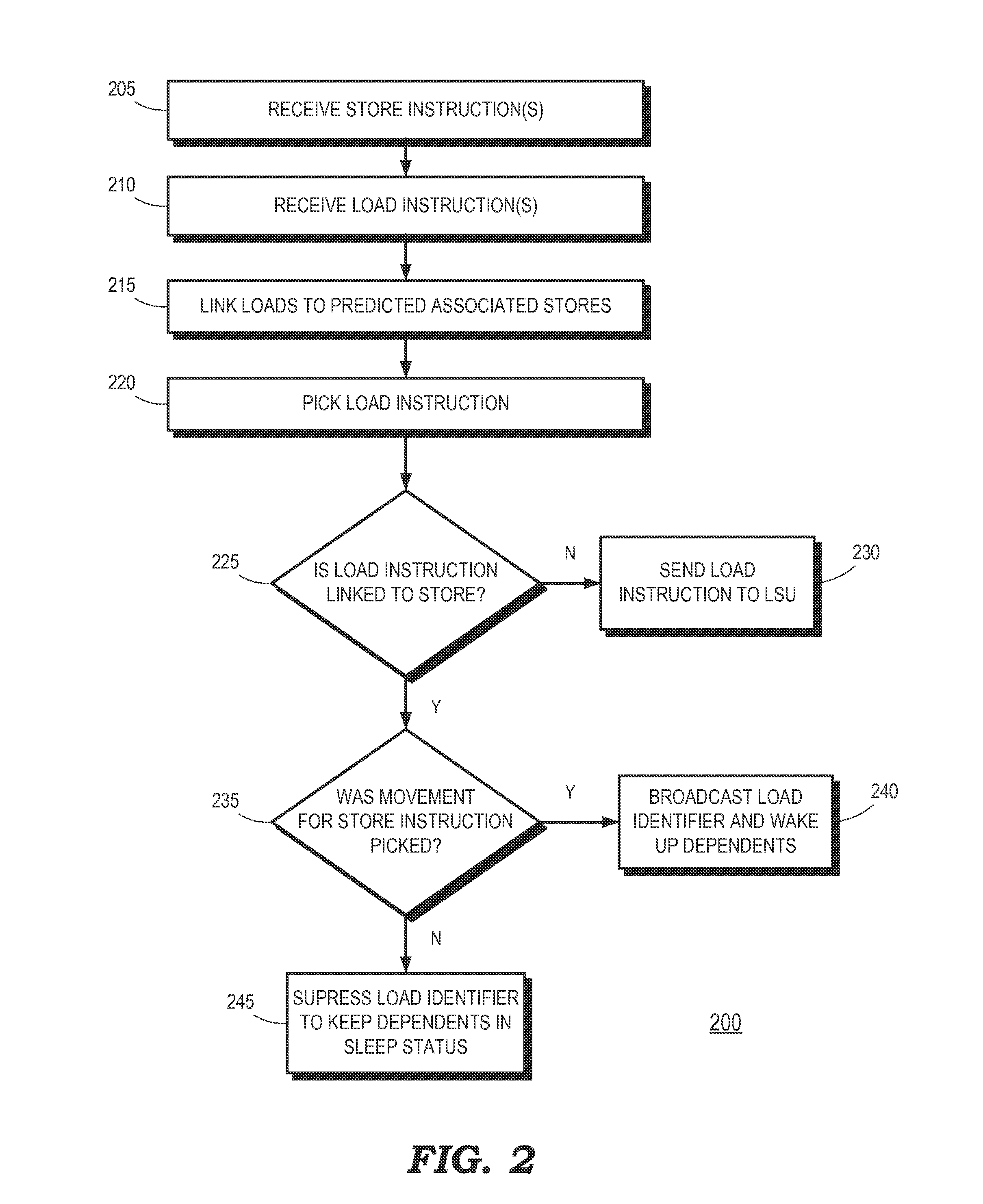Dependence-based replay suppression
a technology of dependence and replay suppression, applied in the field of processors, can solve the problems of reducing affecting the efficiency of the processor, and generating invalid speculatively executed load instructions
- Summary
- Abstract
- Description
- Claims
- Application Information
AI Technical Summary
Benefits of technology
Problems solved by technology
Method used
Image
Examples
Embodiment Construction
[0012]FIGS. 1-5 illustrate example techniques for suppressing the awakening and execution of dependent instructions of a load instruction in situations where the load instruction is likely to replay due to a store-to-load forwarding failure. In some embodiments, a processor maintains a table of store instructions that are awaiting movement to a load / store unit of the instruction pipeline. The processor predicts dependencies between an incoming load instruction and store instructions in the table. In response to scheduling a load instruction, it is typical to mark dependent instructions of the load instruction as being ready for execution, which is referred to as waking the dependent instructions. Using the store-to-load dependency information, the awakening of dependent instructions of the load instruction may be suppressed responsive to the predicted associated store not having a valid status.
[0013]Conventionally, processors perform store-to-load forwarding at a load / store unit (LS...
PUM
 Login to View More
Login to View More Abstract
Description
Claims
Application Information
 Login to View More
Login to View More - R&D
- Intellectual Property
- Life Sciences
- Materials
- Tech Scout
- Unparalleled Data Quality
- Higher Quality Content
- 60% Fewer Hallucinations
Browse by: Latest US Patents, China's latest patents, Technical Efficacy Thesaurus, Application Domain, Technology Topic, Popular Technical Reports.
© 2025 PatSnap. All rights reserved.Legal|Privacy policy|Modern Slavery Act Transparency Statement|Sitemap|About US| Contact US: help@patsnap.com



